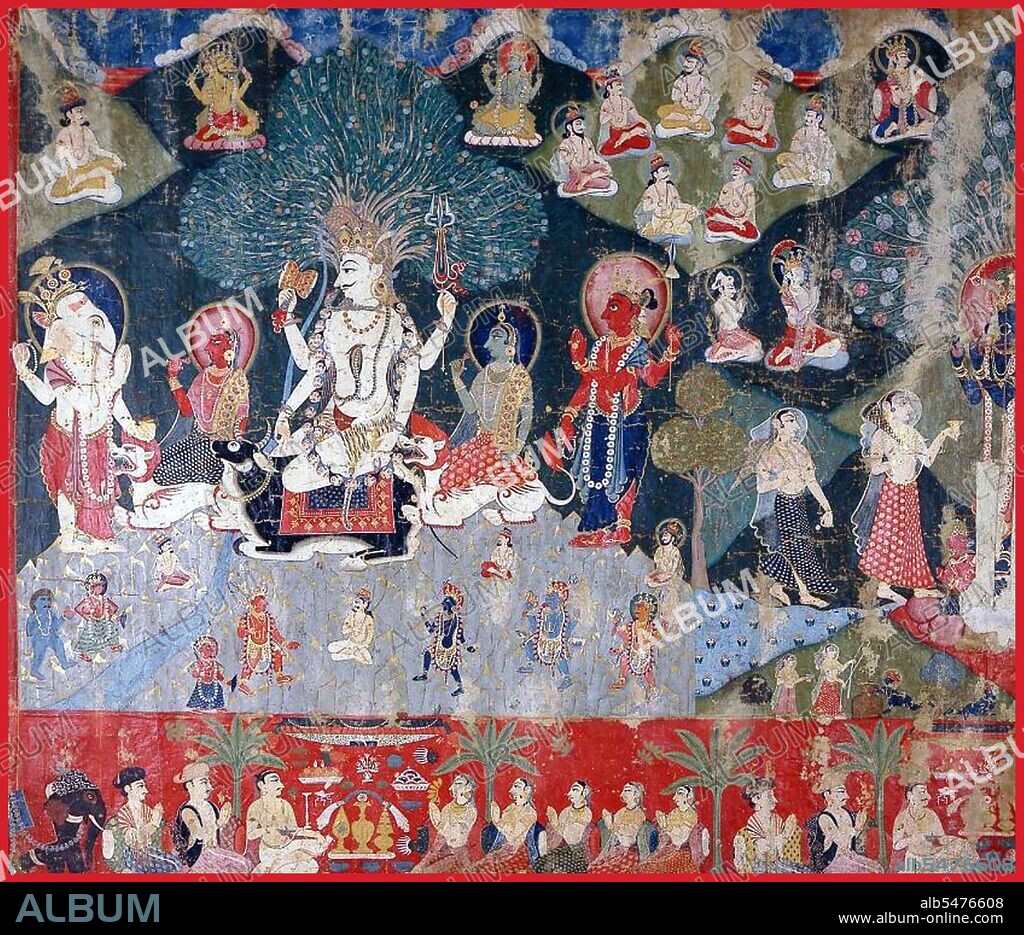alb5476608
Nepal: Painting of gods paying homage to Shiva and Krishna, Kathmandu Valley,19th century

|
Añadir a otro lightbox |
|
Añadir a otro lightbox |



¿Ya tienes cuenta? Iniciar sesión
¿No tienes cuenta? Regístrate
Compra esta imagen.
Selecciona el uso:

Título:
Nepal: Painting of gods paying homage to Shiva and Krishna, Kathmandu Valley,19th century
Descripción:
Ver traducción automática
Shiva (Sanskrit: ??? Siva, meaning 'auspicious one') is a major Hindu deity, and is the destroyer god or transformer among the Trimurti, the Hindu Trinity of the primary aspects of the divine. God Shiva is a yogi who has notice of everything which happens in the world and is the main aspect of life. In the Shaiva tradition of Hinduism, Shiva is seen as the Supreme God. In the Smarta tradition, he is regarded as one of the five primary forms of God. Followers of Hinduism who focus their worship upon Shiva are called Shaivites or Shaivas (Sanskrit Saiva). Shaivism, along with Vai??ava traditions that focus on Vishnu and Sakta traditions that focus on the goddess Shakti, is one of the most influential denominations in Hinduism. Krishna (literally 'dark, black, dark-blue') is a central figure of Hinduism and is traditionally attributed the authorship of the Bhagavad Gita. He is an Avatar of Vishnu and considered in some monotheistic traditions as the Supreme Being. Krishna is identified as a historical individual who participated in the events of the Mahabharata. Krishna is often described as an infant or young boy playing a flute as in the Bhagavata Purana, or as a youthful prince giving direction and guidance as in the Bhagavad Gita. The stories of Krishna appear across a broad spectrum of Hindu philosophical and theological traditions. They portray him in various perspectives: a god-child, a prankster, a model lover, a divine hero and the Supreme Being.
Crédito:
Album / Pictures From History/Universal Images Group
Autorizaciones:
Modelo: No - Propiedad: No
¿Preguntas relacionadas con los derechos?
¿Preguntas relacionadas con los derechos?
Tamaño imagen:
4500 x 3877 px | 49.9 MB
Tamaño impresión:
38.1 x 32.8 cm | 15.0 x 12.9 in (300 dpi)
 Pinterest
Pinterest Twitter
Twitter Facebook
Facebook Copiar enlace
Copiar enlace Email
Email
